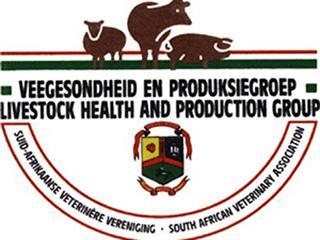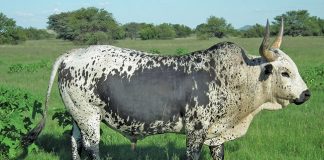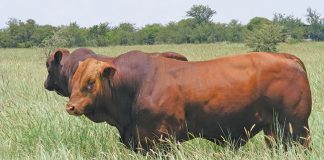
Some heavily pregnant cows were unable to rise and there were reports of difficulty in calving, retained afterbirths and numerous prolapses of the vagina, cervix and uterus. Due to the dusty conditions and Vitamin A deficiency, numerous reports of eye infections were also received.
Vets said they were concerned that animals would not conceive due to their present poor condition and suggested it would be advisable to postpone the breeding season until animals are in a better condition. Discuss the best breeding plan for your situation with your vet.
- An increase in internal and external parasites means farmers should be aware that animals in poor condition are much more susceptible to these and heavy mortalities could take place once it starts raining and larvae are numerous on the short sprouting grass.
- Water snails, the intermediate hosts of liver and conical fluke worms are also concentrated in smaller water sources and farmers should be aware of clinical signs in animals such as bottle jaw, anaemia and diarrhoea. They should take representative faecal samples to their vet for egg counts.
- Now is the time to evaluate your tick control programme. Once it starts raining there will be a drastic increase in larval tick numbers. If these can be controlled right from the start, fewer ticks will be present later in the season. Discuss measures with your vet to make sure the parasiticides you’re using are still controlling the parasites effectively.
Many mortalities due to tick-transmitted diseases such as African and Asiatic red water anaplasmosis and heartwater were recorded. These diseases will increase further after the first good rains. Observe the animals daily and treat as soon as clinical signs are observed.
- Blackquarter, swelled head, botulism, lumpy skin disease and pneumonia were reported. These could have been avoided if a proper vaccination programne was followed.
- On many farms biosecurity measures are ignored. This can be deduced from the increase seen in venereal diseases. Spend some time with your vet and plan how to put the biosecurity measures in place.
- When there are food shortages animals eat anything that is green and therefore numerous plant poisonings were recorded: tulip, Lantana, ink berry, gousiekte, gifblaar, slangkop, plakkies and chinkerinchee.
Be aware of old fertilizer bags left unattended as 16 out of 55 cattle died when they got access to them. Beware of urea getting wet after rain – numerous deaths were recorded.
Feedlot Report
Sheep feedlots
- October was a relatively good month when it came to animal health in sheep feedlots. However, there were a lot of weak lambs included in groups of sheep arriving at feedlots. The immune system and mineral status of sheep from drought-stricken areas and where grazing is scarce were depressed and the sheep had problems adapting to the improved rations. Many of the weaker lambs did not survive transportation.
- Welcome rain at most of the feedlots lessened the dust problem. As a result, fewer cases of pneumonia were seen. But foot problems increased In the wet kraals.
- A large percentage of weak animals died and had numerous internal abscesses caused by Trueperella pyogenes or Corynebacterium ovis.
Cattle feedlots
- Most problems in October were due to dust and nutrition-related conditions. The fact that the supply of nutritional substances was erratic caused numerous losses. Many feedlots were compelled to change rations from time to time and the quick change from chop to maize in the ration led to acidosis outbreaks and animal mortalities.
- Liver abscesses as a result of rumen wall damage were seen and were accompanied by acidosis. Pleuritis and lung condemnations occurred due to pneumonia where dust and winter conditions were severe.













